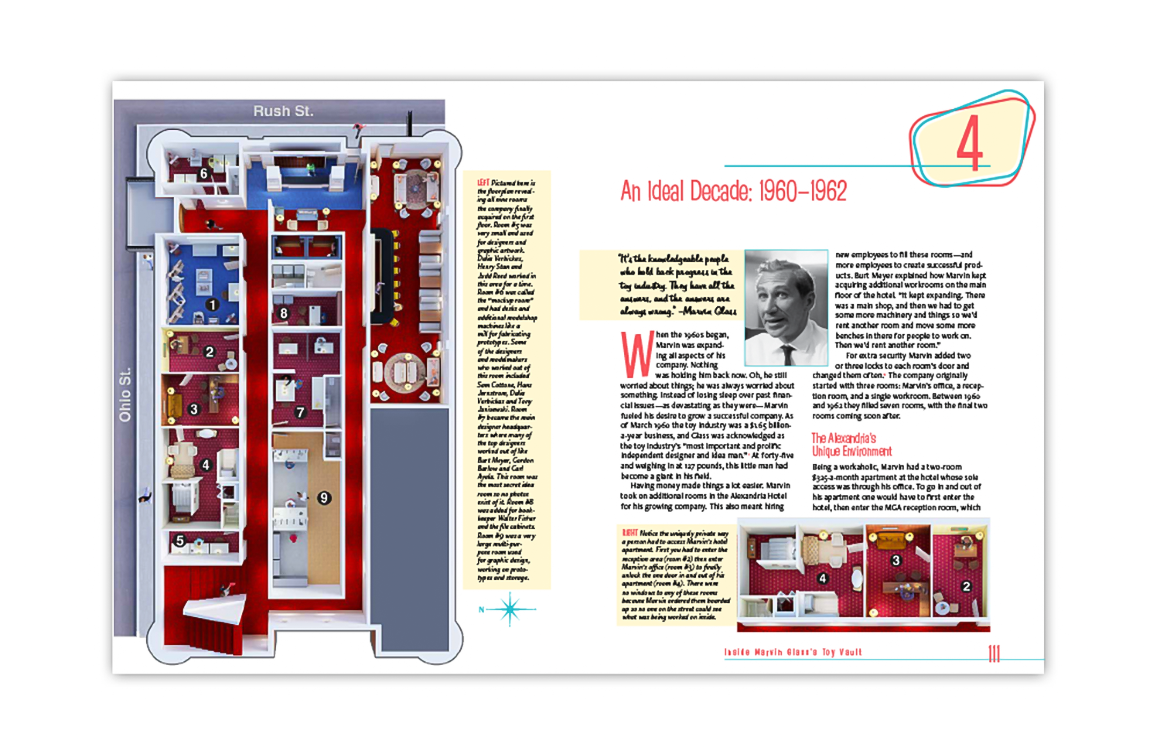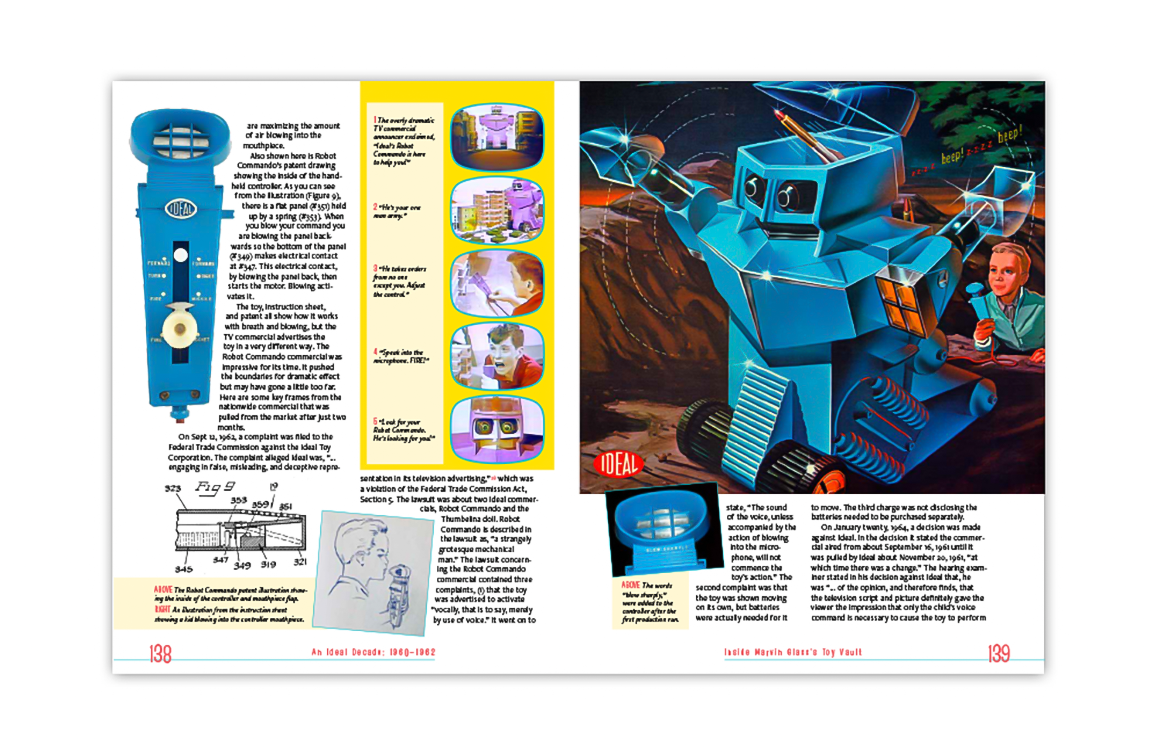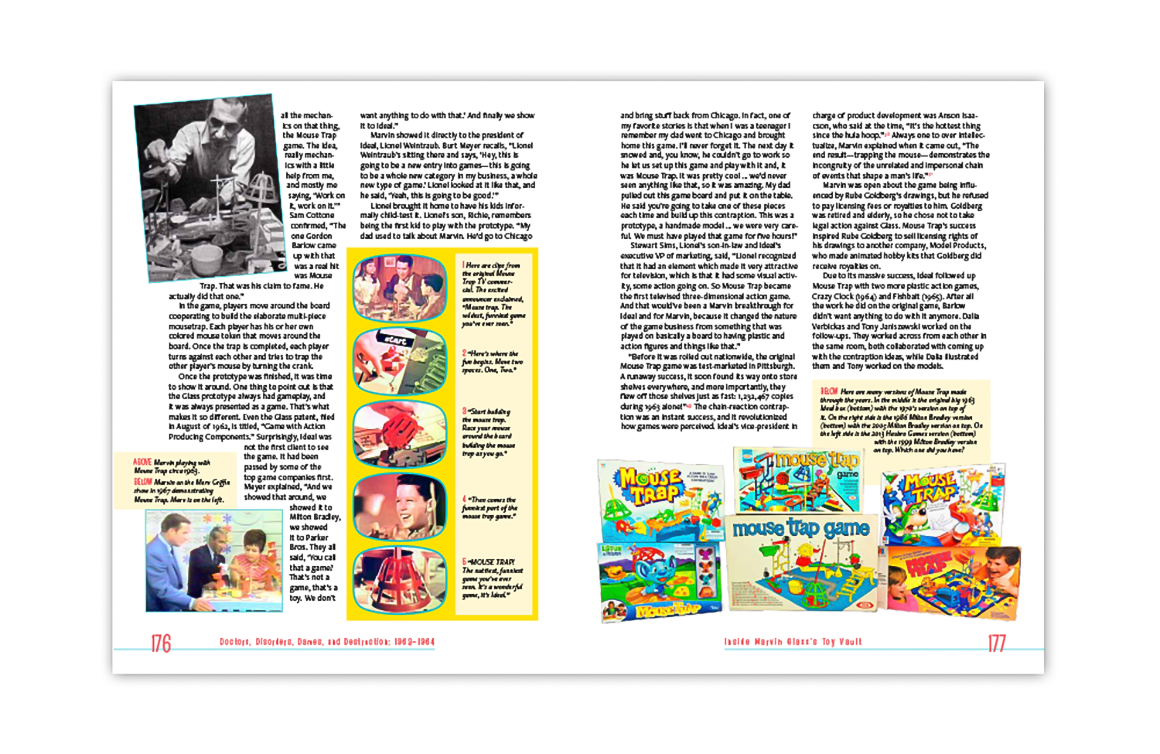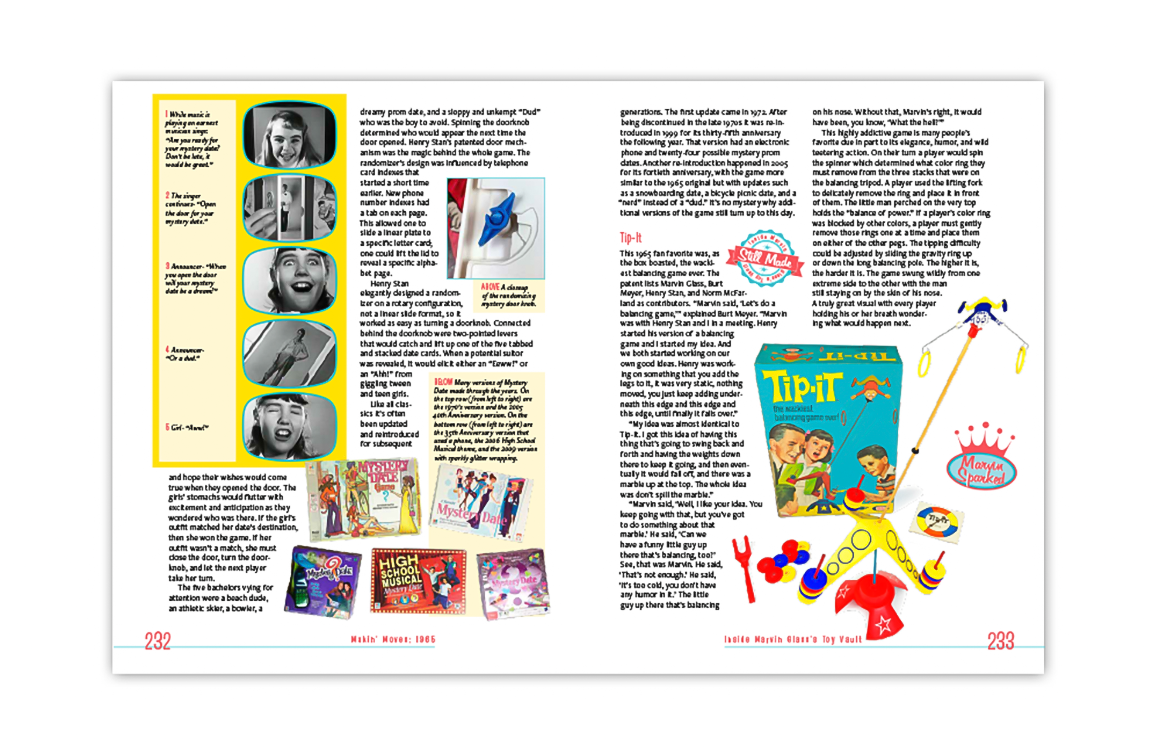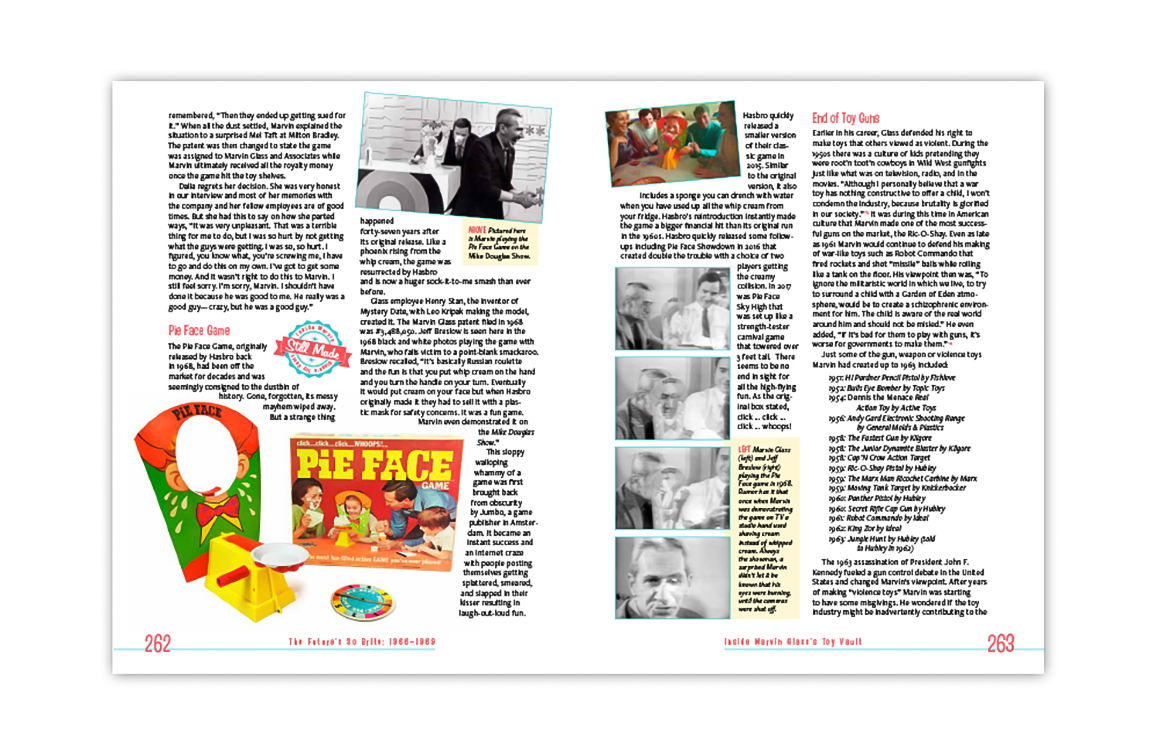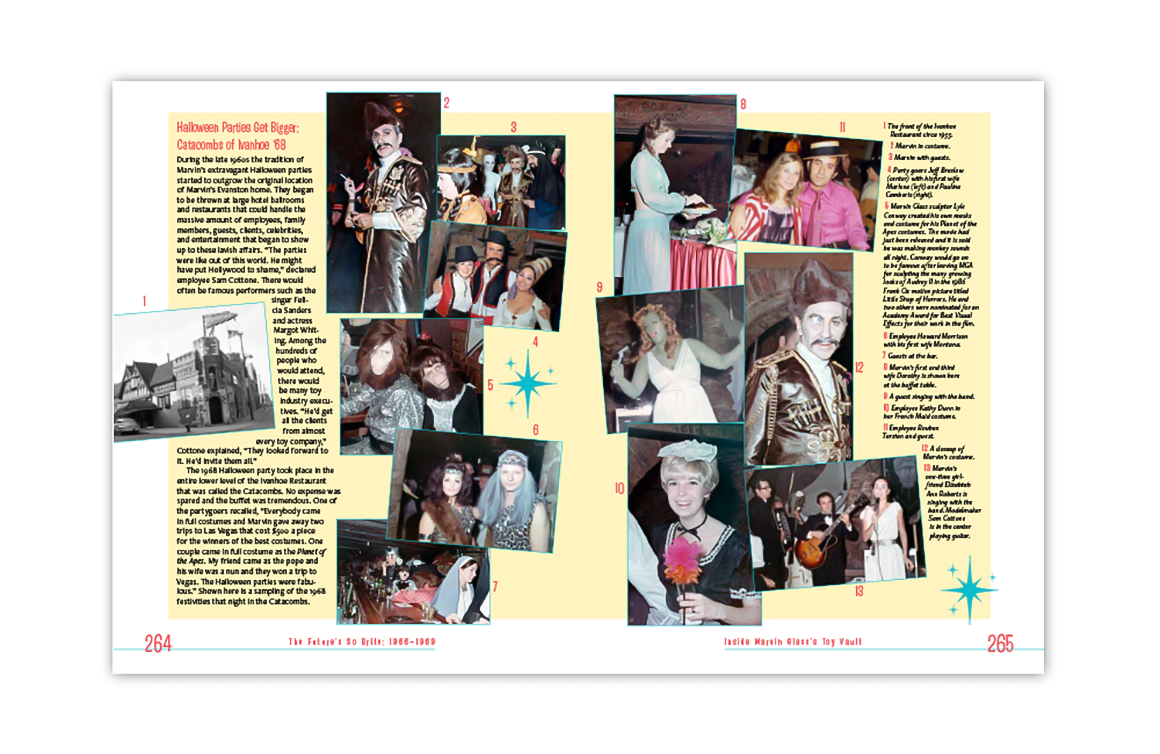In what ways did Marvin Glass change the way toys and games were created?
Marvin Glass founded Marvin Glass and Associates, the first, largest, and most successful toy design studio in the world. He created a business model that changed the opportunities available for toy designers, engineers, model makers, sculptors, and others working within the toy industry. Before Marvin Glass and Associates, these roles were only available within toy and game manufacturers such as Hasbro, Mattel, and others who focused on ideas generated from their own in-house teams.

You conducted around 100 interviews for this book. Whom did you talk with and what did they share about Marvin Glass that surprised you?
I spoke with family, friends, clients, partners, and employees. I was surprised by just how playful and secretive he was. Much of his personality stems from his childhood and the abuse he experienced from his mother starting when he was seven-years-old. She was eventually committed to an asylum. At that same time, Glass was abandoned by his father. Glass lived with emotional disorders as a result of these traumas. He was paranoid, had a fear of flying, of being alone, and suffered from terrible insomnia. He saw a psychiatrist to help him through some of these issues. He was very open about seeking psychotherapy. He didn’t talk much about what was discussed in those sessions but he was unafraid to disclose the fact that he sought help.
While at the asylum visiting his mother in his 20’s, Glass met Judd Reed who was there visiting his wife. At this time, Reed was already making toys. The two men formed a productive partnership as a result of that encounter.

What impact does Glass’ legacy have on today’s toymakers?
There are about 25 toys and games created at Marvin Glass & Associates that are still made today including Pie Face, Operation, Lite-Brite, Mouse Trap, and Rock ‘Em Sock ‘Em Robots. All the toy designs studios are beholden to Glass because his studio was the first of its kind. Toy manufacturers wouldn’t even look at toys invented by independent designers until Glass created that industry and proved there was money to be made with independent designs. The success of Marvin Glass and Associates opened the door for other independent studios.

Why did you write A World Without Reality: Inside Marvin Glass’s Toy Vault?
The incredible stories about Glass’ life and career were being lost with the passing of time and the death of each person who knew him. I’ve worked with former Glass personnel in my own career as a toy and game inventor. I’d heard many amazing stories. After writing my first book, I felt the need to document those stories. The research for A World Without Reality started about 10 years ago. Many people who knew Glass have died, some of those individuals have passed since I interviewed them. I took a now-or-never approach to the book; the stories were too important to lose.
I think the person who knew Glass the best was his long-time assistant, Pauline Camberis. She worked with him for decades. Glass was married five times during his life but there was always Pauline. She was very protective of his legacy and the truth. I wouldn’t have had the chance to talk with her had we not had people in common. I sat down with her a couple of times and communicated with her through phone and email. She knew I respected and admired Glass and was not out to sensationalize his life story. She died a few years ago. Her stories are now documented.

How did you approach Glass’ associates for a conversation about the toy designer?
It was difficult to even get the names of people associated with Glass. I scoured toy and game patents for people’s names and sought them out for an interview. These patents are 60-years-old; many people have died, gotten married and changed their last name, or moved to other countries. Each contact was like a puzzle piece. As those pieces came together, they formed a picture of who Glass was in his personal life and profession.
Interestingly, no one declined to talk with me. Even those people who were fired by Glass spoke about how Marvin Glass and Associates was the greatest place they ever worked. Everyone loved the studio and wanted to share their view of and experience with Glass. Had I not been a toy-industry insider, I wouldn’t have been granted this type of access.

Glass had a reputation for his lavish, over-the-top lifestyle. How much of that was myth vs. reality?
When I wrote about boxer Harry Greb, there were a lot of myths about his career and life. With Glass, it was all reality and then some! He was eccentric, playful, immensely private. He had a friendship with Hugh Hefner, dealings with the mob, and was married five times. He used surveillance cameras at the studio, blacked-out windows, and handcuffed briefcases to the wrists of his associates when they travelled with studio property. He attended toy fairs in disguise, including once dressing up as the Maharaja of Kuala Lumpur, complete with turban and cape. He bought a theatre in an effort to get more roles for a girlfriend. He employed sheer force of will to prevent his past from dictating his future. He was a genius in his field and a master showman.

Learn more about author Bill Paxton and his fascinating book A World Without Reality: Inside Marvin Glass’s Toy Vault.



